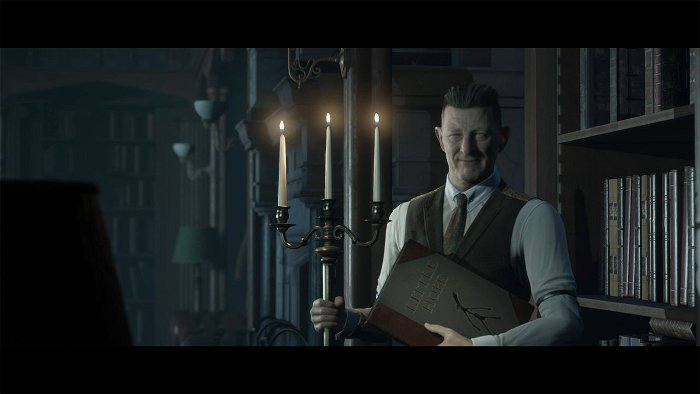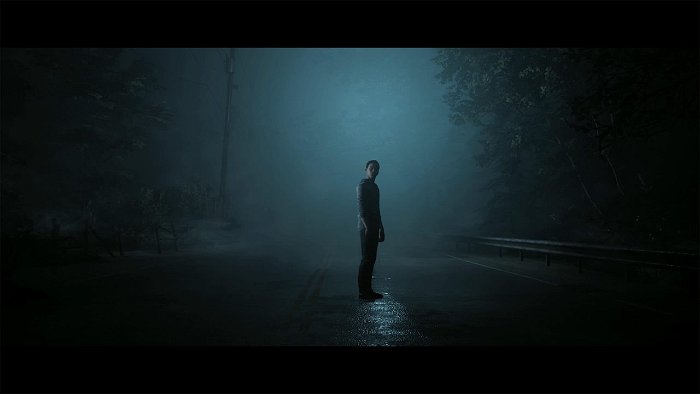The Dark Pictures : Little Hope is the latest standalone game in the series following Man of Medan which was released in August last year. Little Hope focuses on the strange events occurring in a ghost town of the northeastern United States.
The prologue follows a family of six who are involved in a tragic accident, which kills five. The game then shifts focus to a group of college students and their professor who get stranded in the ghost town of Little Hope after their bus crashes. The group is forced into the town of Little Hope by a supernatural fog which prevents them from going back to the bus after they leave it, hemming them in toward the final confrontation with the spirits of the past which haunt the deserted factory town.
The group of five often splits up and bickers amongst themselves, which helps ratchet up the tension alongside a series of strange occurrences, jump scares, and genuinely threatening encounters. Each member of the group is visited with several visions of the past and the grim fates of their supposed doppelgangers, who were part of the Little Hope Witch Trials of 1698.

Much like with Until Dawn and Man of Medan, Supermassive Games allows for players to unlock various different endings based on the dialogue choices, actions, collected evidence, and what personality traits they’ve unlocked in the five protagonists. You can play the game alone or with a friend in co-op, and the replay value is exceedingly high as there are four different endings, and multiple ways for several characters to die, which leaves you with a large number of people to save… or fail. Simple dialogue choices early in the game can have massive effects on the later gameplay and conversations unfold wildly differently depending on your choices.
Unlike many games that offer you dialogue options, Little Hope moves with the player, rather than against them. Characters don’t just revert to baseline and each choice has consequences. While there are points where characters will backtrack on their decisions, change their minds, or behave irrationally, it fits within the horror narrative. People aren’t always going to be logical when being hunted down by demons, ghosts, and zombies.
So when John and Taylor swing wildly between arguing every chance they get to appeasing Andrew’s need for cooperation, it feels rather organic. That sort of behavioural flipping occurs throughout the game as the four college students and their professor believe they can change the events of Little Hope’s past, but they aren’t certain as to how to stop the hauntings that keep following them and slowly whittling down their numbers. Which leads to several half-baked theories, a few different attempts to kill things that are already obviously dead, and a moral complication straight out of the Salem Witch Trials.

Little Hope is rife with literary allusions, metaphors, and foreshadowing beyond the promotions that players uncover through postcards strewn about the game. The first sequences of the game can, if you’re paying attention, spoil the twist ending. But that’s alright, since the twist isn’t even the interesting part. Watching the whole game come together in retrospect, seeing how small choices affected the ultimate outcome, that’s the fun of games like this.
In fact, my biggest gripe with Little Hope is the sneak system. Rather than holding the controller steady like in Until Dawn, The Dark Pictures Anthology has players take part in a heart-beat quick time event in order to sneak effectively. While this is a far easier gameplay mechanic to nail, it also takes away from some of the greatest cinematic moments of the game. Sure, the jump scares are fantastic, but the sneak sequences highlight moments of incredible tension and rather than paying attention to the action on-screen, you’re focused on the heartbeat signal waiting for the game to change which button or key you need to press in order to succeed.
The other quick-time events happen in moments where split-second decisions and failed actions would result in terrible outcomes. While running from monsters trying to kill you, having to correctly push a specific button or three makes perfect sense. And if you fail, Little Hope is as punishing as reality would be. Sometimes you can recover, but sometimes you’ve failed and that means a character dies. It helps build and maintain the game’s tension, which is essential for a horror game. The occasional scenes with the Curator, who offers praise, censure, and hints in turn, also helps keep the tension high as his short monologues offer a reprieve from the outright horror of the main story, while adding a nice bit of existential dread to the overall tone.

While parts of the gameplay can be a bit clunky, especially with forced camera angles, most of Little Hope is still easy to navigate even when the camera switches to an extreme view in order to give you a good jump scare. And while jump scares can be a bit cheap if not done well, in Little Hope, they just help enhance the ongoing dread of being stranded in a deserted town and ultimately chased by ghosts, zombies, and possibly the devil himself.For a game that comes with only 5 hours of gameplay (though I highly recommend playing through it at least twice), Little Hope is absolutely worth investing in. The story has everything you want from a horror title: immortal monsters, ghosts, Witch Trials, and an unsolvable mystery in a nearly perfect experience.






